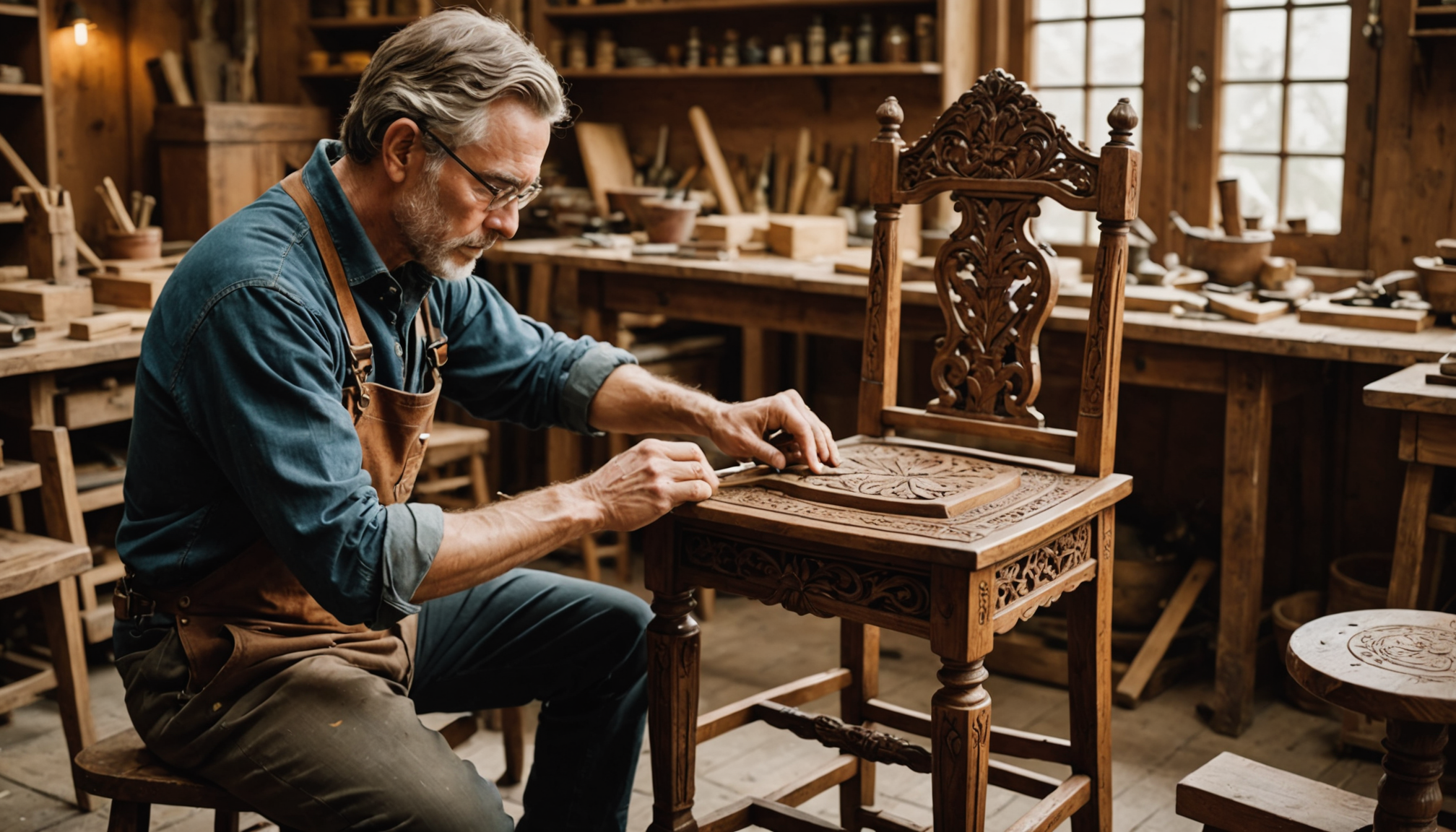Understanding the various factors that influence the repair costs of custom furniture is essential for homeowners and enthusiasts seeking to maintain the beauty and functionality of their pieces. The complexity of the repair process, the type of damage, and the current market rates for materials and labor all play crucial roles in determining the final expense.
One of the primary factors affecting the cost is the extent of the damage to the furniture. Minor scratches or surface blemishes, for instance, typically require less labor and fewer materials than more significant issues such as structural damage or extensive wear. As a result, the more severe the damage, the more costly the repair tends to be.
Another significant factor is the type of material used in the furniture. For example, furniture made from rare or exotic woods can add to the overall cost due to the higher price of sourcing these materials. In contrast, more common woods may be less expensive to repair. The skill required to work with certain materials, such as delicate or intricate veneers, can also increase labor costs. Skilled craftsmen often charge more for their services, reflecting the precision and artistry involved in such repairs.
The design complexity of the furniture is also a consideration. Custom pieces with unique shapes, elaborate carvings, or intricate details often demand specialized expertise, contributing to a higher cost. Repairing such intricate designs may involve meticulous techniques that are both time-consuming and require specialized knowledge.
Additionally, the geographic location where the repair takes place can influence costs. Areas with a higher cost of living tend to have higher labor rates, affecting the overall price of repairing furniture. This geographic variance is further impacted by the availability of skilled craftsmen in the region, where scarcity can drive prices up.
Table showing Estimated Cost Influence by Factor:
| Damage Type | Estimated Impact on Cost |
| Minor surface scratches | Low |
| Structural damage | High |
| Exotic materials | Medium to High |
| Simple design | Low to Medium |
| Complex design | High |
| Urban location with high labor costs | High |
| Rural location with low labor costs | Low to Medium |
The choice between using professional services or opting for a do-it-yourself approach can also significantly influence costs. Professional services typically come at a premium due to the expertise, equipment, and assurance of quality they offer. However, for those with skills in furniture repair and access to necessary tools, taking on a DIY project can be a cost-effective alternative, though it may require more time and effort.
Being mindful of these factors can help in estimating and planning for the potential costs involved in custom furniture repair and refinishing, ultimately aiding homeowners in making informed decisions that align with their budget and maintenance goals for their beloved furniture pieces.
Common repair techniques
When considering the restoration or enhancement of custom furniture, understanding the array of repair techniques available is crucial. Each technique addresses different types of damage and requires varying levels of skill and precision. These methods are essential for both preserving the structural integrity and aesthetic appeal of cherished pieces.
1. Surface Scratch Repair:
– Cleaning: Start by thoroughly cleaning the surface with a mild soap and water solution. This step ensures the scratch is free of dirt and oils that may interfere with the repair process.
– Filling: Use a high-quality wood filler or scratch repair product that matches the furniture’s finish color. Apply the mixture with a small putty knife, carefully filling the scratch to ensure a smooth surface.
– Sanding: Once the filler is dry, gently sand the area with fine-grit sandpaper until smooth, taking care not to affect surrounding areas.
– Finishing: Apply a finish that matches the furniture, such as varnish or oil, with a soft cloth or brush. Allow it to dry completely, ensuring the repaired area seamlessly blends with the rest of the piece.
2. Veneer Replacement:
– Assessing Damage: Examine the damaged veneer to determine its type and extent. If only partially damaged, it may be possible to repair it without full replacement.
– Removing Old Veneer: Carefully use a heat gun to loosen the old veneer, employing a scraper to lift it without damaging the wood underneath.
– Cutting New Veneer: Cut a new piece of veneer to the exact size needed, ensuring it matches the grain and pattern of the existing wood.
– Adhering Veneer: Apply veneer adhesive to both the wood surface and the back of the veneer. Using a veneer press or roller, firmly press the new piece in place to avoid bubbles.
– Sanding and Finishing: Once set, sand the edges gently and apply a finish to match the existing surface for a uniform appearance.
3. Structural Repairs:
– Identifying Problems: Check for loose joints, broken parts, or weakened structures. Specialized tools may be needed to access hidden components.
– Disassembly: Carefully disassemble the affected sections to thoroughly address the issue without stressing other areas of the furniture.
– Reinforcement: Use wood glue, clamps, and dowels to realign and securely reinforce the joints. Allow sufficient time for the adhesive to cure.
– Reassembly: With the furniture repaired, reassemble the piece, ensuring all components fit snuggly and securely.
4. Cushion and Upholstery Repair:
– Inspection: Examine cushion covers and upholstery for tears, wear, and sagging.
– Repair or Replace: Minor tears can be sewn with matching thread. For more significant wear, consider replacing the upholstery fabric.
– Cushion Filling: If cushions are sagging, replace or refill them with high-density foam or an alternative filling to restore comfort and appearance.
These common repair techniques emphasize the diligence and skill often required to restore and enhance custom furniture successfully. By carefully following these steps, homeowners can maintain their pieces’ beauty and ensure their home care investments continue to be cherished for years to come.
Materials and tools needed
In the realm of furniture repair and refinishing, having the right materials and tools is as crucial as the skills applied in the process. For those who choose to undertake the task of restoring custom furniture themselves, understanding the essentials is key to ensuring a successful outcome while keeping costs manageable.
Wood Fillers and Putty: For correcting imperfections such as scratches, gouges, or holes, wood fillers and putty are indispensable. Available in various shades to match different wood finishes, these products help achieve a seamless appearance by filling the gaps and creating a smooth surface ready for refinishing.
Sanding Materials: Sandpaper of varying grits—from coarse to fine—is vital for prepping surfaces, smoothing out repairs, and blending finishes. Hand sanding blocks and orbital sanders can be pivotal for larger projects, ensuring even pressure and expedient results.
Adhesives: Strong wood glues and specialized adhesives are necessary for any structural repairs, reinforcing joints, and attaching new veneers. These provide the foundational strength needed to ensure durability and longevity in home care and repair projects.
Stains and Finishes: Matching stains and protective finishes are required to restore or change the hue of the furniture pieces and protect against future wear. Polyurethane, lacquer, or varnish finishes provide long-lasting protection, enhancing the piece’s resilience and beauty.
Protective Equipment: Safety remains paramount in any repair activity. Dust masks, goggles, and gloves protect from irritants like dust and chemicals used in stains and finishes, ensuring a safe work environment.
Precision Tools: Depending on the complexity and scope of the project, precision tools such as chisels, scrapers, and clamps are often necessary. Clamps hold pieces securely in place during adhesive setting, scrapers aid in old finish removal, and chisels assist in detailed woodwork.
Upholstery Kit: For projects involving cushions and fabric, an upholstery kit complete with staple guns, needles, and thread can address repairs or complete replacements efficiently. Having these tools on hand simplifies tasks such as recovering seats or sewing minor tears, which are crucial for the cost-effective refurbishment of custom furniture.
Employing the correct materials and tools not only impacts the quality and aesthetic of the final product but also relates directly to the cost associated with furniture repair and refinishing. While initial purchases of these supplies can seem a financial outlay, they represent an investment in the quality and lifespan of one’s furniture. All these elements collectively ensure that restored furniture remains a lasting asset in home care, valued both for its functional integrity and its enhanced appearance.
Refinishing cost breakdown
When it comes to the financial aspects of refinishing custom furniture, understanding how costs break down is pivotal for homeowners managing their home care budgets effectively. The expenses involved in refinishing furniture are typically influenced by several factors, including labor, materials, and additional services that might enhance the final product.
The first cost component is materials, which generally includes stains, finishes, and sealants. These are essential to achieving the desired color and protection for the wood. High-quality materials can be more expensive but are often worth the investment for the longevity and aesthetic they provide. For instance, oil-based finishes usually offer a rich, durable coat and may cost more than their water-based counterparts.
Next, labor costs play a significant role, largely determined by the complexity of the refinishing job. Hiring skilled craftsmen ensures a professional finish, but this expertise comes at a price. For custom furniture with intricate details or larger pieces that require more effort, expect labor fees to increase. On average, professional labor rates can range significantly depending on geographic regions and the expertise level of the craftsmen involved.
Additional costs might arise if any preparatory work is necessary before refinishing. This includes stripping old finishes—a labor-intensive step that might incur further charges. Whether done manually or using chemicals, stripping can add up to 20% to 30% to the overall cost of the refinishing project.
Transportation can also influence the total expense, as some furniture pieces may need to be moved to and from a workshop. Understanding whether pickup and delivery services are included in the quoted price or charged separately helps avoid unexpected expenses.
While tackling a refinishing project yourself may seem appealing from a cost-saving perspective, it requires accurate budgeting for all required materials and tools, along with consideration of your own time saved versus the potential quality and efficiency of professional services.
For those interested in delving into the world of furniture repair and refinishing but are unsure where to start, visiting LocallyFind.com can be a valuable first step. This comprehensive home services directory can connect you with local professionals who can provide estimates tailored to your specific needs, ensuring your custom furniture receives the care and skill it deserves.
Comparing DIY versus professional services
Choosing between a do-it-yourself approach and hiring professional services for custom furniture repair and refinishing is a decision that weighs heavily on cost, expertise, and quality expectations. Each option comes with its unique set of advantages and disadvantages, influencing the final decision based on personal circumstances and goals for home care.
Opting for the DIY route can be significantly cost-effective, especially for those who are willing to invest time and effort into learning the necessary skills. The primary expenses in DIY projects include tools, materials, and the time dedicated to completing the work. While there is an initial investment in purchasing equipment, such as sanders, saws, or upholstery kits, these tools can be reused for future projects, potentially leading to savings over time. Moreover, DIY repair grants a level of personal satisfaction and creativity, allowing homeowners to customize pieces according to their preferences and explore their craftsmanship capabilities.
However, the DIY path is not without its challenges. It requires a committed investment in learning and often involves trial and error, which can lead to mistakes and possibly higher costs if errors need professional correction later on. This approach demands considerable patience and careful attention to detail to ensure a quality finish that stands the test of time, adding value to custom furniture rather than diminishing it through amateur attempts.
On the other hand, professionals bring expertise, efficiency, and the guarantee of quality results but at a higher upfront cost. Hiring skilled craftsmen means entrusting your valuable pieces to individuals with years of experience, offering the peace of mind that comes with knowing the furniture will be handled with meticulous care. Professionals are well-versed in the latest techniques and trends in furniture repair and refinishing, ensuring a polished and durable result that aligns with your aesthetic vision.
Furthermore, professionals often have access to specialized tools and high-quality materials that might otherwise be out of reach for individual DIY enthusiasts. The convenience factor is another bonus, as hiring experts eliminates the need for homeowners to set aside personal time for the project, allowing them to focus on other important responsibilities. However, the costs associated with professional services can vary widely based on location, the reputation of the craftsmen, and the complexity of the work, potentially leading to significant expense in certain scenarios.
Ultimately, the decision between DIY and professional services hinges on a balance between budget constraints, the desire for hands-on involvement in home care, and the value placed on achieving a high-quality finish. Gaining a comprehensive understanding of both approaches equips homeowners with the knowledge to make informed decisions that harmonize with their financial capabilities and dedication to preserving their beloved custom furniture pieces.
In conclusion, whether you choose to embrace the challenge of DIY furniture repair and refinishing or invest in professional craftsmanship, understanding the scope of potential costs and the level of expertise required is crucial. This insight ensures that your treasured furniture maintains its aesthetic and functional integrity, adding value to your home and enjoyment to your living space for years to come.


